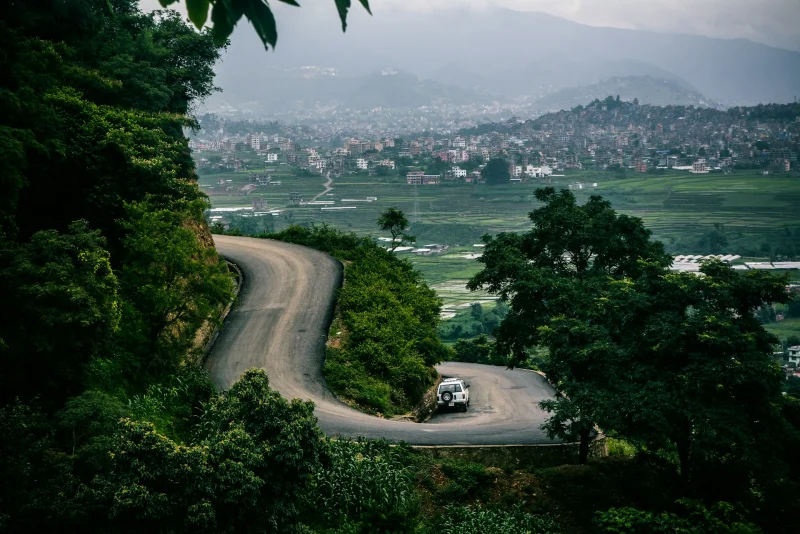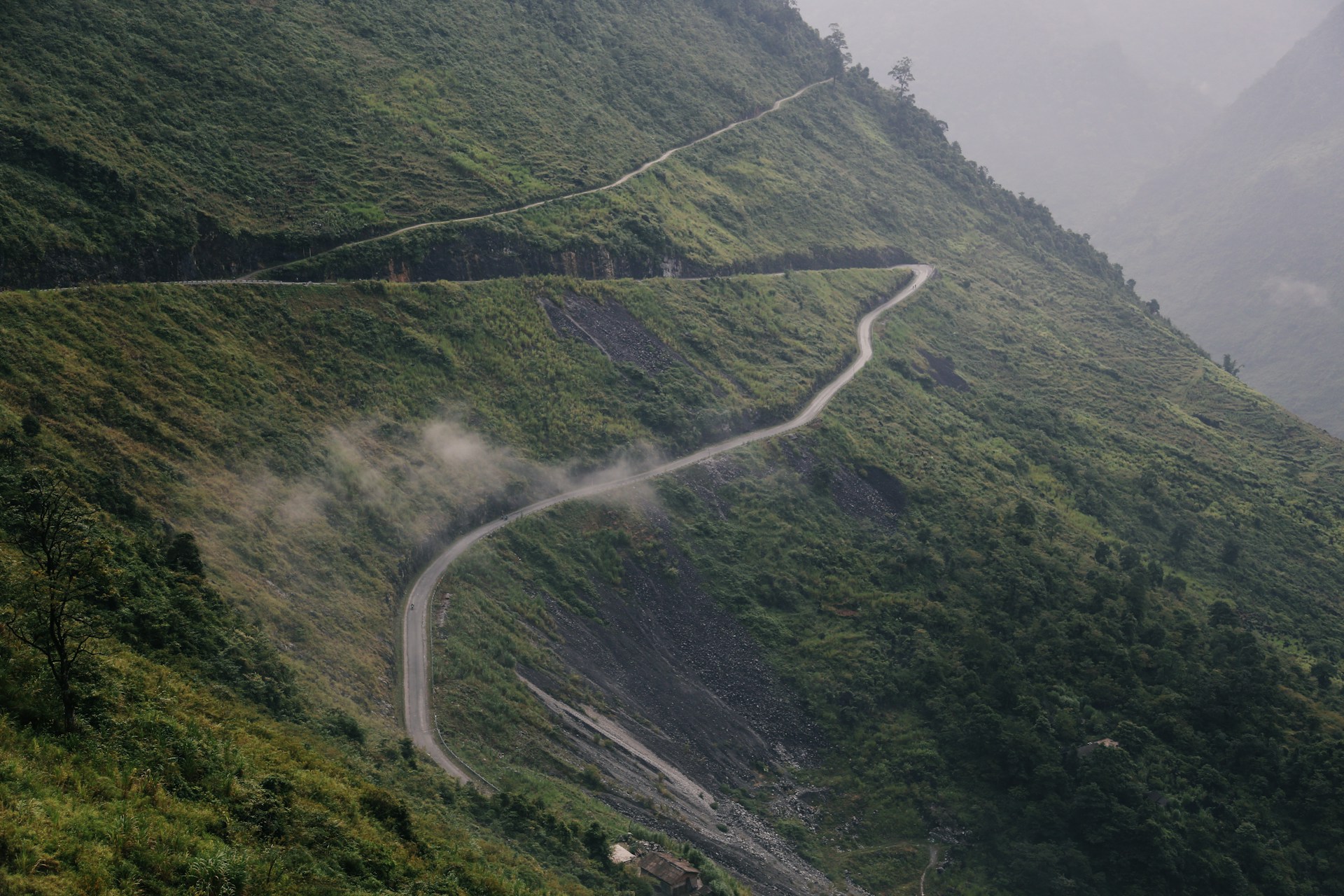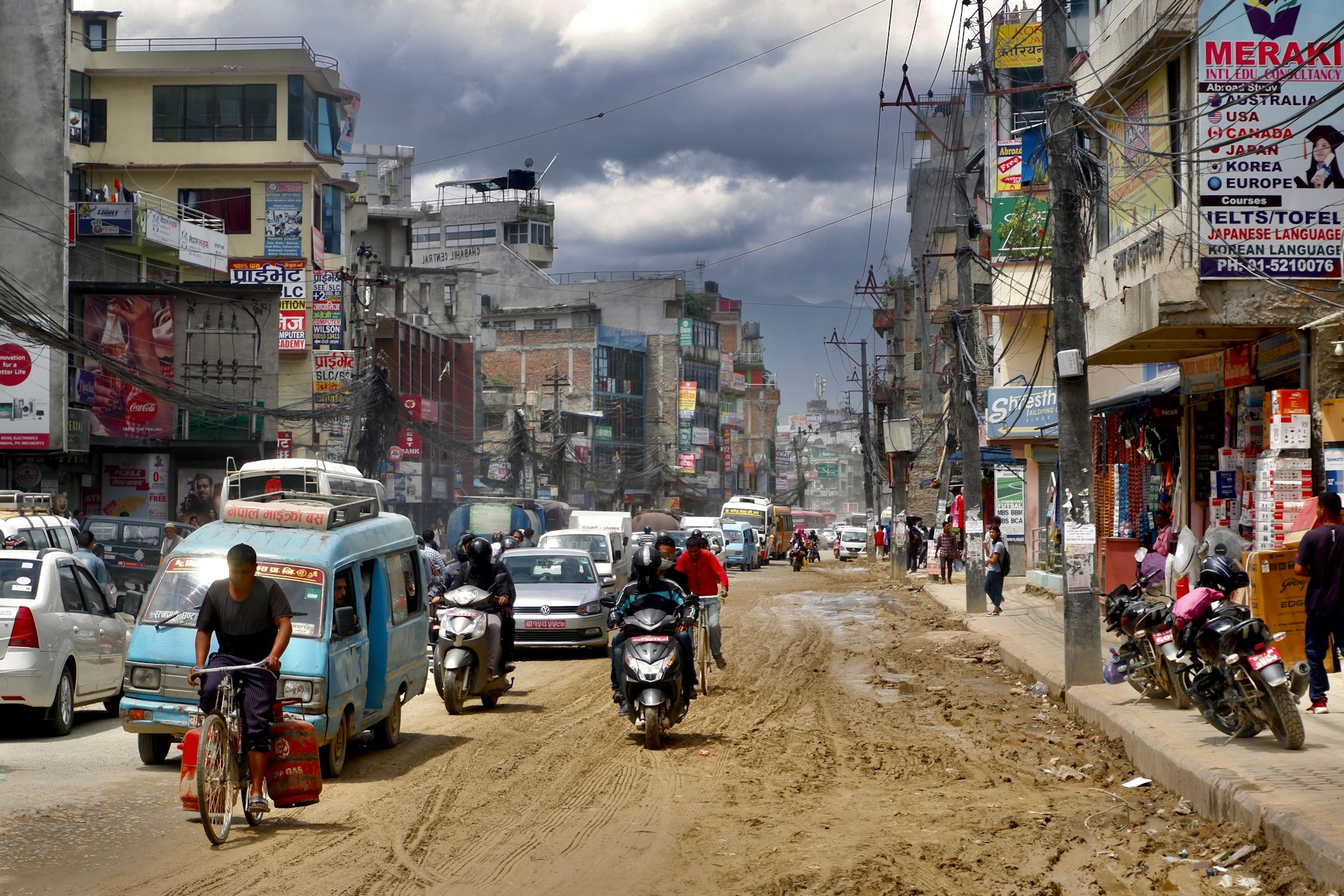Driving in Nepal: What You Need to Know in 2025
Introduction to Driving in Nepal

Driving in Nepal in 2025 is not the same as it was before. The roads are getting even better than before, more people are starting to have funds to buy cars and are buying cars, and even electric vehicles have been introduced in Nepal which are now slowly but surely becoming quite popular in Nepal. But driving in Nepal is still very different from driving in other countries, that's for sure. The roads are sometimes narrow, the traffic can be quite heavy especially in cities like Kathmandu where the traffic jam may take a waiting time of around 10-15 minutes or even more, and you also have to be very careful from hitting other vehicles, the roads are also very difficult to drive in especially so in hilly areas.
Whether you are a new driver who just bought a car or are someone who is thinking of buying one, or a tourist, it is important to know the basic rules and how driving really works in Nepal. You also need to understand the new road systems, safety tips, and how to handle difficult roads and weather.
In this blog, we’ll make it easy for you. We’ll talk about what it’s really like to drive here in Nepal, what kind of cars most people use, and the best driving tips in Nepal for 2025. So, if you’re planning to drive or learn about driving in Nepal, this guide is for you.
Driving Conditions and Road Infrastructure when Driving in Nepal

Driving in Nepal can be quite different from what people see in other countries. While the roads are improving in 2025, there are still many things you should know before driving here.
1. City Roads vs. Rural Roads
-
City roads like in Kathmandu, Pokhara, and Butwal are quite busy with traffic and crowded with many vehicles.
-
As for rural roads the roads there can be rocky, bumpy, narrow, and full of holes, multiple turns to do, especially in hilly or mountain areas.
2. Potholes and Dust
-
Some roads still have potholes or are not fully paved, especially in older parts of towns making driving in such roads very difficult and some vehicles mayn’t even be able to handle driving in such roads.
-
In dry weather, dust can be a problem especially in air pollution rich cities like Kathmandu where there is too much dust everywhere, making it hard to see clearly.
3. Ongoing Road Projects
-
The government is working on many road improvement projects, and many have also been done and so you might also see construction zones here and there.
-
These may cause traffic or delays, so plan your trips with extra time if possible.
4. Weather Impact on Roads
-
Monsoon season (June–September) , which is the rainy season, can make driving in Nepal quite difficult due to heavy rain, slippery roads, or landslides that cause the fragile roads in Nepal to get bad.
-
And in winter, there is fog which causes poor visibility when driving, especially in early mornings.
5. New Highways and Expressways
-
Roads like Madan Bhandari Highway and Postal Highway are helping connect towns faster.
-
These newer roads are smoother and safer, making it easier, safer and convenient for vehicles to travel longer distances.
If you’re planning to drive in Nepal, always check the road conditions first. Being alert, driving slowly and carefully, and keeping your vehicle well-maintained will help you stay safe.
Driving in Nepal: License and Legal Requirements (2025)
.jpg)
If you're planning to drive in Nepal in 2025, it's also important for you to know the latest rules and steps to get your driving license. The government has made some changes to make roads safer and the process smoother.
Who Can Apply for a Driving License?
-
Age Requirements:
-
16 years: For motorcycles and scooters.
-
18 years: For cars and light vehicles.
-
21 years: For heavy vehicles like buses and trucks.
-
Health and Behavior:
How to Apply for a Driving License
-
Online Application:
-
You can do online application by visiting the official website
-
Then filling out the application form and then uploading necessary documents like citizenship or passport.
-
Biometric and Document Verification:
-
After submitting the form, you'll then be given a date to visit the Transport Management Office.
-
At the transport management office your photo and fingerprints will be taken, and your documents will also be properly verified.
-
Written Test:
-
You also need to pass a written exam on traffic rules and signs.
-
And you need a score of at least 70 out of 100 to pass.
-
Practical Driving Test:
License Validity and Renewal
-
Validity:
-
New driving licenses are valid for a long time for about 10 years.
-
Renewal:
For Foreigners
-
If you're visiting Nepal and wish to drive, you need an International Driving Permit (IDP) along with your home country's license.
-
If you plan to stay longer than a year, you must obtain a Nepali driving license.
By following these steps and understanding the requirements properly, you can ensure a smooth process in obtaining or renewing your driving license in Nepal.
Vehicle Options and Trends in 2025
In 2025, choosing a vehicle in Nepal has become more exciting with many different options to choose from. With improvements in road infrastructure and a growing focus on sustainability, both fuel-using vehicles and electric vehicles (EVs) are popular choices among Nepali drivers.
Popular Fuel using Vehicles
Many people still prefer cars that use petrol or diesel for their familiarity and widespread service availability in Nepal. Some of the most popular models include:
-
Maruti Suzuki Alto: This is a budget-friendly car that is known for its small size and good fuel efficiency, making it quite good for city driving.
-
Maruti Suzuki Swift: This is a sporty looking hatchback known for its good performance and cool looking design.
-
Hyundai i20: This is a stylish looking and comfortable car that is suitable for both city and highway driving.
-
Kia Seltos: This is a small size SUV that provides a good balance of comfort, technology, and performance.
-
Toyota Yaris: This vehicle is known for its good reliability and fuel efficiency, making it a great choice for daily city traveling from home to work.
Rise of Electric Vehicles (EVs)
Electric vehicles are also gaining popularity in Nepal due to environmental concerns and cost savings it gives in the long term. The government is also supporting the use of EV through tax incentives and the expansion of charging infrastructure which have made EVs more accessible and practical to drive than before.
Popular EV models include:
-
Tata Tiago EV: This is a budget-friendly electric car that is quite suitable for city driving.
-
BYD Atto 3: This is a popular small size SUV that provides a good range and modern features.
-
MG Comet EV: This is a small electric car good for city driving.
-
Deepal S07: This is another popular Ev which is a midsize SUV with a focus on providing comfort and technology.
Vehicle Maintenance and Support
With the rise of EVs, maintenance has become simpler and more cost-effective in the long run. Electric cars have fewer moving parts, reducing the need for frequent servicing. Also the availability of charging stations is increasing, making it more convenient for EV owners to own and drive EV around.
Choosing the Right Vehicle
When selecting a vehicle in Nepal, make sure to consider the following:
-
Driving Needs: City travel vs. long-distance travel.
-
Budget: Initial cost vs. long-term savings.
-
Environmental Impact: fuel vs. electric options.
-
Maintenance: Availability of service centers and parts.
By thinking about these main factors, you can choose a vehicle that best suits your lifestyle and also contribute to a greener Nepal.
In summary, 2025 provides a wide range of vehicle options in Nepal, from reliable fuel using cars to new electric vehicles. With the government's push towards sustainable transportation and the growing infrastructure to support it, now is a great time to consider your driving needs and make an smart choice.
Challenges and Safety Tips when Driving in Nepal

Driving in Nepal can be quite a fun thing to do, but it also has some difficulties. Roads are definitely improving that’s for sure, but you still need to be careful.
Here’s what you should know and how to stay safe while driving in Nepal.
Common Challenges While Driving in Nepal
-
Narrow Roads
Many roads, especially those roads which are in hilly areas, are small and narrow roads which are quite hard to drive on especially if you are driving a big sized vehicle. -
Traffic Jams
Cities like Kathmandu and Pokhara mostly have heavy traffic, especially during office hours where you may just need to wait for more than 15 min which can honestly be quite frustrating and annoying and can also harm your mental health. -
Not clear Road Signs
Some places in Nepal have missing or hard-to-read signs, which can confuse drivers making it harder to drive. -
Weather Problems
During monsoon, roads can get quite slippery or blocked due to landslides, or even dangerous to drive on.
Safety Tips for Driving in Nepal
-
Drive Slowly and Carefully
Don’t try to rush. Many roads in Nepal are bumpy or narrow. So it’s better for you to drive slowly and reach your destination safely than driving hurriedly and increasing the risk of accidents. -
Use Headlights and Horns Properly
Make sure to use the vehicle's headlights in foggy or dark roads, and honk gently when turning sharp corners. -
Keep Distance
Always be sure to keep a distance between your car and others, especially on highways or wet roads. -
Check Your Vehicle Regularly
Whether you drive a petrol, diesel, or electric vehicle (EV), make sure that it's in good condition. This includes checking the vehicles brakes, tires, lights, and batteries (for EVs). -
Follow Traffic Rules
Always be sure to wear your seatbelt properly. And also don’t use your phone while driving and be sure to stop at red lights. -
Be Patient
Roads can be busy and slow especially in cities like Kathmandu that have quite a lot of traffic. And getting angry or impatient in such cases won’t help. The best thing you can honestly do is to just stay calm and focused.
By following these safe driving tips in Nepal, you can enjoy a relaxing, comfortable and safer ride. whether you're driving a new car or a second-hand one from us Atal Auto or another trusted brand in Nepal.
Conclusion to Driving in Nepal
Driving in Nepal in 2025 is better than before with previously damaged roads being repaired, roads are getting smoother to drive on, and more people are driving cars, scooters, and electric vehicles. Still, you need to be smart and careful while driving in Nepal due to the narrow roads, still not fixed roads, bumpy roads, dust which makes driving quite difficult.
-
So to drive properly you need to ;earn the traffic rules properly and follow them.
-
Choose the right vehicle for your needs.
-
Drive slowly, stay calm, and always check your vehicle before a long trip.
Whether you are new to driving or have years of experience, safe driving in Nepal starts with being alert, respectful, and responsible. The road is shared by everyone so let’s make it safe for all.

